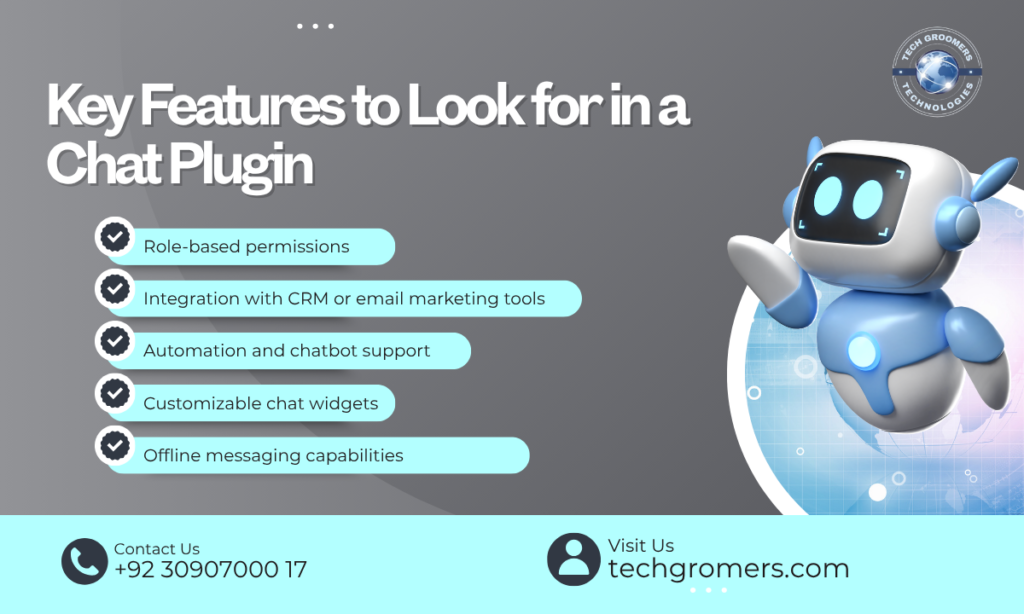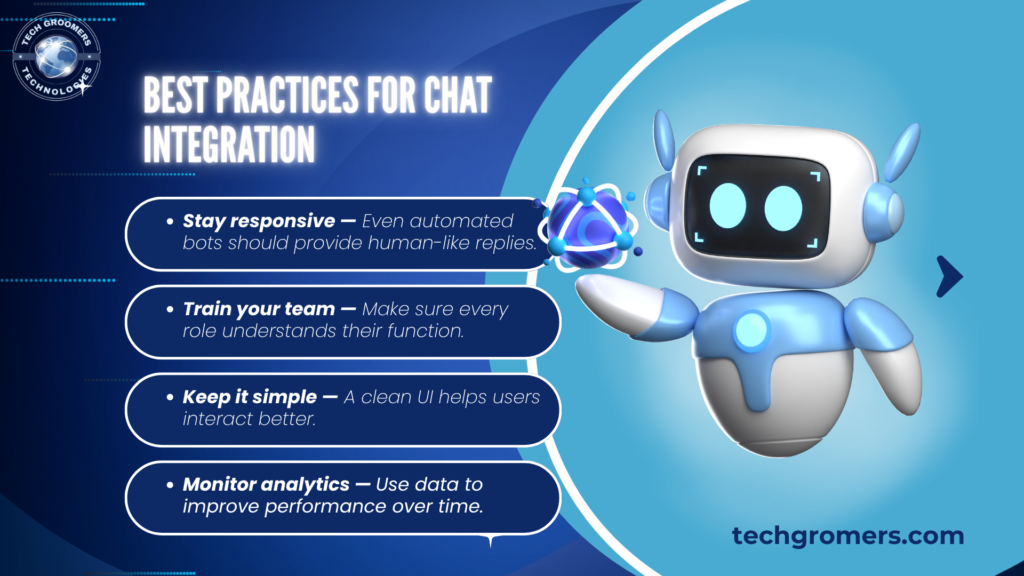In today’s fast-paced digital world, users expect instant responses and seamless communication on every website they visit. If you own or manage a WordPress site, integrating a real-time chat system isn’t just a good idea — it’s essential. But what if you could do more than just install a chat plugin? What if you could assign roles, automate workflows, and create a smarter, more responsive chat environment? That’s what we’re diving into today — and TechGroomers is here to guide you through every step.
Why Add Chat to Your WordPress Site?
Before we dive into the “how,” let’s talk about the “why.” Adding chat functionality to your WordPress website can:
- Increase customer engagement
- Boost conversion rates
- Improve customer support efficiency
- Build trust with visitors
Live chat tools offer real-time interaction, allowing you to answer questions, resolve concerns, and offer solutions instantly — all of which lead to a better user experience and higher sales.
Choosing the Right Chat Plugin
The WordPress ecosystem offers a wide variety of plugins. Choosing the right one depends on your business size, budget, and required features. Some top-performing chat plugins include:
- Tidio Live Chat
- LiveChat
- WP Live Chat Support
- Chaty
- Facebook Messenger Chat Plugin
Each of these offers unique benefits, such as chatbot integration, email capture, visitor tracking, and support for mobile.
Key Features to Look for in a Chat Plugin

When selecting a plugin, consider the following features:
- Role-based permissions
- Integration with CRM or email marketing tools
- Automation and chatbot support
- Customizable chat widgets
- Offline messaging capabilities
Understanding Chat Roles
Once your plugin is installed, setting up chat roles allows you to manage communication better. Typical chat roles include:
- Admin: Full access to settings, conversations, and analytics
- Agents: Handle live conversations with visitors
- Bot Handlers: Monitor or manage chatbot conversations
- Moderators: Supervise chat quality and step in when needed
By assigning specific roles, you avoid confusion and ensure that the right team members handle the right tasks.
How to Integrate Chat Roles in WordPress
- Install Your Chosen Plugin
Head to your WordPress dashboard, navigate to Plugins > Add New, and search for your chosen plugin. - Configure Basic Settings
Customize chat appearance, behavior, and notifications. - Assign User Roles
Navigate to the plugin’s settings panel. Many plugins (like LiveChat) allow you to assign roles and manage permissions directly from their dashboard. - Connect Third-Party Tools
Use Zapier, Mailchimp, or HubSpot for more advanced workflows like email marketing or lead nurturing. - Test Your Setup
Have team members test their assigned roles to ensure smooth communication.
Using Plugins to Add More Chat Functionality
To take things further, consider using the following plugin categories:
- Chatbots: Automate FAQs and lead collection (e.g., Tidio, Botsify)
- Analytics: Track chat performance (e.g., Google Analytics Plugin for WordPress)
- User Management: Customize roles (e.g., User Role Editor)
Best Practices for Chat Integration
- Stay responsive — Even automated bots should provide human-like replies.
- Train your team — Make sure every role understands their function.
- Keep it simple — A clean UI helps users interact better.
- Monitor analytics — Use data to improve performance over time.

Final Thoughts
Integrating chat roles and plugins into your WordPress site is more than just a technical upgrade — it’s a strategic move to increase engagement, boost conversions, and provide real-time support. With the right setup, plugins, and team structure, you can transform your website into a lead-converting, customer-supporting powerhouse.
At TechGroomers, we specialize in customizing WordPress solutions to meet your business goals. Whether you’re looking to boost interactivity, improve customer service, or just need guidance on plugin selection, we’ve got you covered.
Visit techgroomers.com to learn more about how we can help you grow smarter, faster, and more efficiently.




Leave a Reply